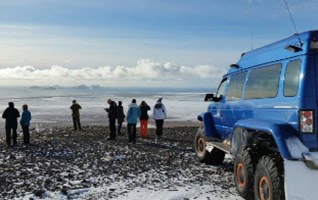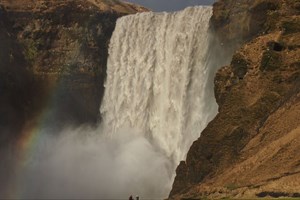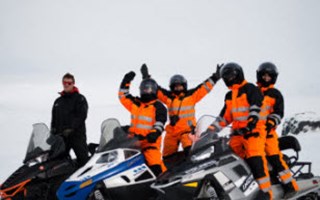Seljalandsfoss Waterfall
Seljalandsfoss in the Seljalandsá river cascades 62 metres off the cliff edge. Upstream the river flows through Tröllagil (Troll Gorge) to Tröllagilsmýri (Troll Gorge Marsh), a lovely hollow with flourishing vegetation, before tumbling down over a series of waterfalls, and finally off the cliff edge at Seljalandsfoss. In addition to the main cascade at Seljalandsfoss, smaller streams tumble off the cliff at its western side. Seljalandsfoss stands in a lovely location, surrounded by cliffs and green slopes. It is a landmark visible from far away as a white streak against the dark cliff face. A footpath leads behind the waterfall (don’t forget your raincoat!).
Geology
From the plains of the Markarfljót river, the Seljalandsmúli outcrop is clearly visible, with the Seljalandsfoss and Gljúfrabúi waterfalls. The predominant rock type in the area is hyaloclastite (glassy volcanic aggregate), while tillite (hardened glacial till) is found behind Seljalandsfoss, along with patches of lava that flowed between the Gljúfurá and Seljalandsá rivers from Hornfell on Stóradalsheiði. The lava field, known as Hamragarðahraun, forms the upper layer at the cliff-top. At the bottom is hyaloclastite, and between them a layer of tillite.
The Markarfljót river flowed along by the Hamragarðar farm from about 1645 until the 20th century. About the place Seljalandsfoss in the Seljalandsá river cascades 62 metres off the cliff edge. Upstream the river flows through Tröllagil (Troll Gorge) to Tröllagilsmýri (Troll Gorge Marsh), a lovely hollow with flourishing vegetation, before tumbling down over a series of waterfalls, and finally off the cliff edge at Seljalandsfoss. In addition to the main cascade at Seljalandsfoss, smaller streams tumble off the cliff at its western side.
Seljalandsfoss stands in a lovely location, surrounded by cliffs and green slopes. It is a landmark visible from far away as a white streak against the dark cliff face. A footpath leads behind the waterfall (don’t forget your raincoat!). Nineteenth-century Romantic poet Jónas Hallgrímsson wrote many poems which have become classics of Icelandic literature, among them Dalvísa (Valley Poem), which is generally believed to refer to the Hamragarðar area.
From the poem Dalvísa (Valley Poem) by Jónas Hallgrímsson (Translation Bernard Scudder)
Chasm-dweller, ancient falls,
My gully in the rocks’ close walls!
Torrent of white, my blessèd pass,
Chasm-dweller, adorned with grass!
Friendship we have known together,
Friends we shall remain for ever;
Chasm-dweller, ancient falls,
My gully in the rocks’ close walls!
Directions:
Seljalandsfoss is located about 121 km from Reykjavik. Take Ring Road nr. 1 towards the town Hvolsvöllur. After passing the town drive for about 18 minutes and then turn left on road nr. 249. There is a car park in front of the waterfall.
Read more about Driving in Iceland.
Set off from the car park at the Seljalandsfoss waterfall. You can cross the pedestrian bridge in front of the waterfall, or take the path behind the falls. Going behind the waterfall is recommended as a special experience, but you may get wet. From behind the falls, go down the steps to the footpath that leads along the bottom of the slope below the cliffs. You will soon reach a small brook, Fosstúnslækur, which tumbles down off the cliff edge in a pretty cascade. Closer to Hamragarðar is Myllulækur (Mill Brook) and Myllufoss (Mill Falls), a narrow but fine waterfall. Its name is derived from a fulling mill which operated at Hamragarðar in the 1820s. This was also the location of the first hydro-electric power plant in the region, constructed by farmer Erlendur Guðjónsson of Hamragarðar in the 1920s.
A little farther on is the Gljúfurá river, where the Gljúfurárfoss or Gljúfrabúi (Chasm Dweller) waterfall lies hidden behind the cliffs. The falls can only be seen by clambering carefully up the rock; chains have been fixed to the rock for support. The top of the cliff offers a splendid view of the waterfall as it tumbles down into the narrow gorge. After climbing carefully down again, you can either go back the same way to your starting point, or follow the Gljúfurá river down to the road, and walk along the road back to Seljalandsfoss. The walk back offers fine views of the cliffs and waterfalls.
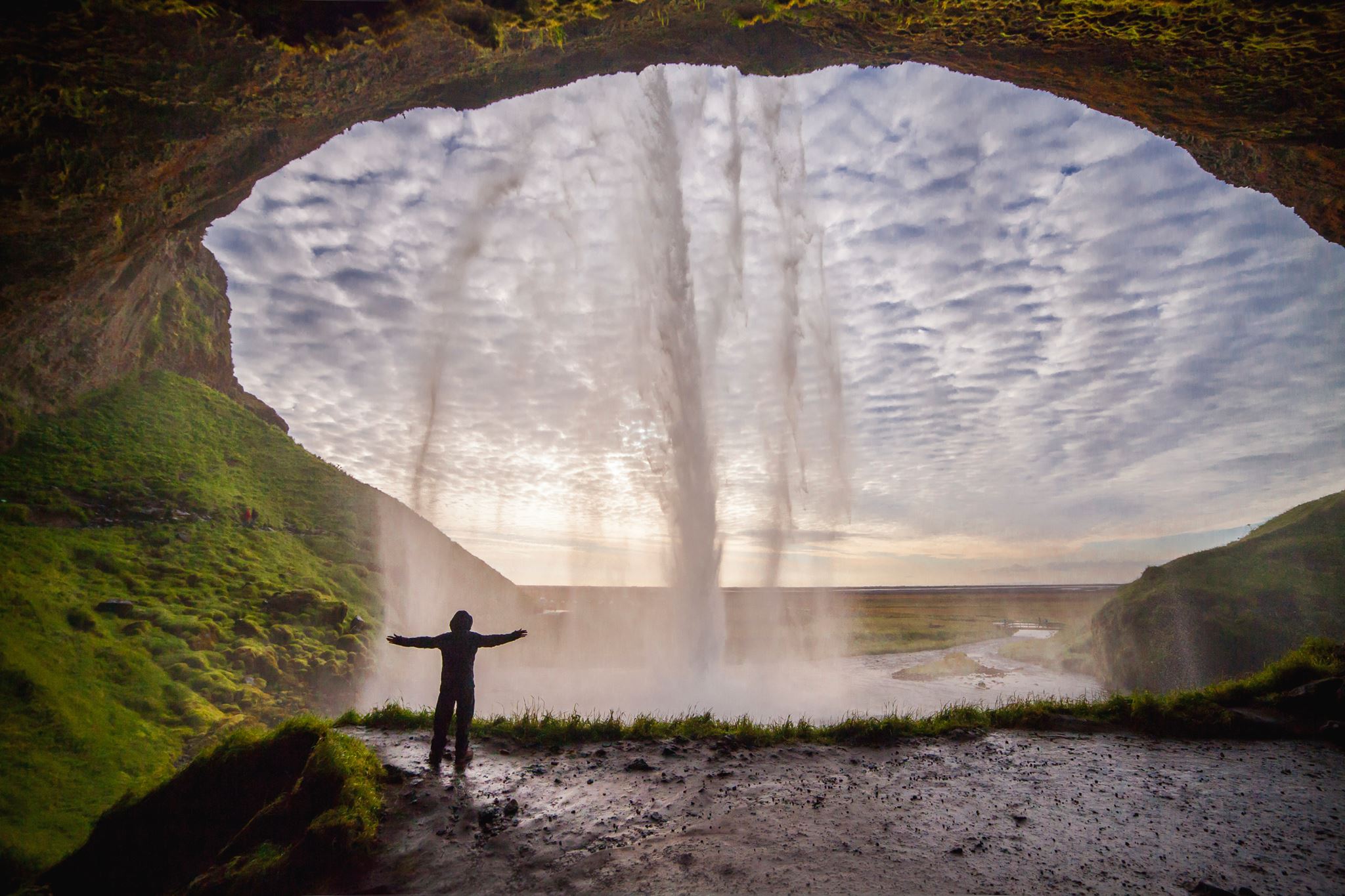
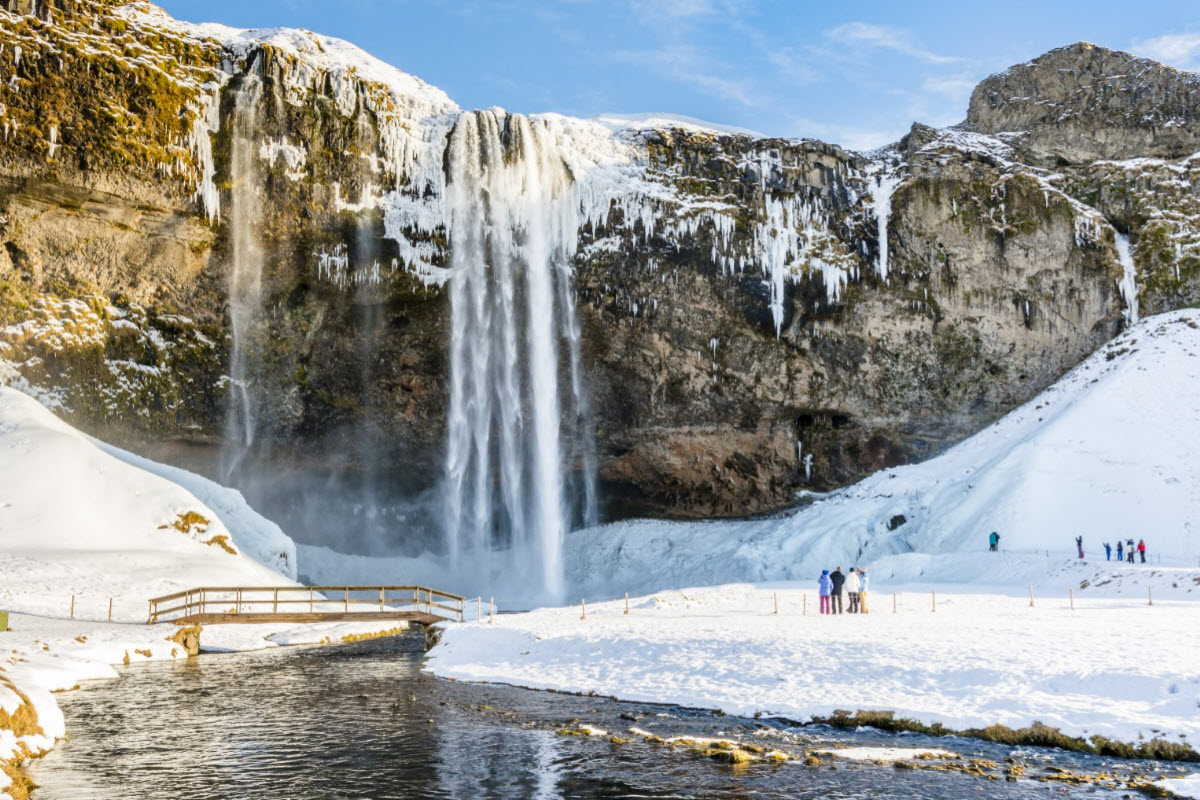
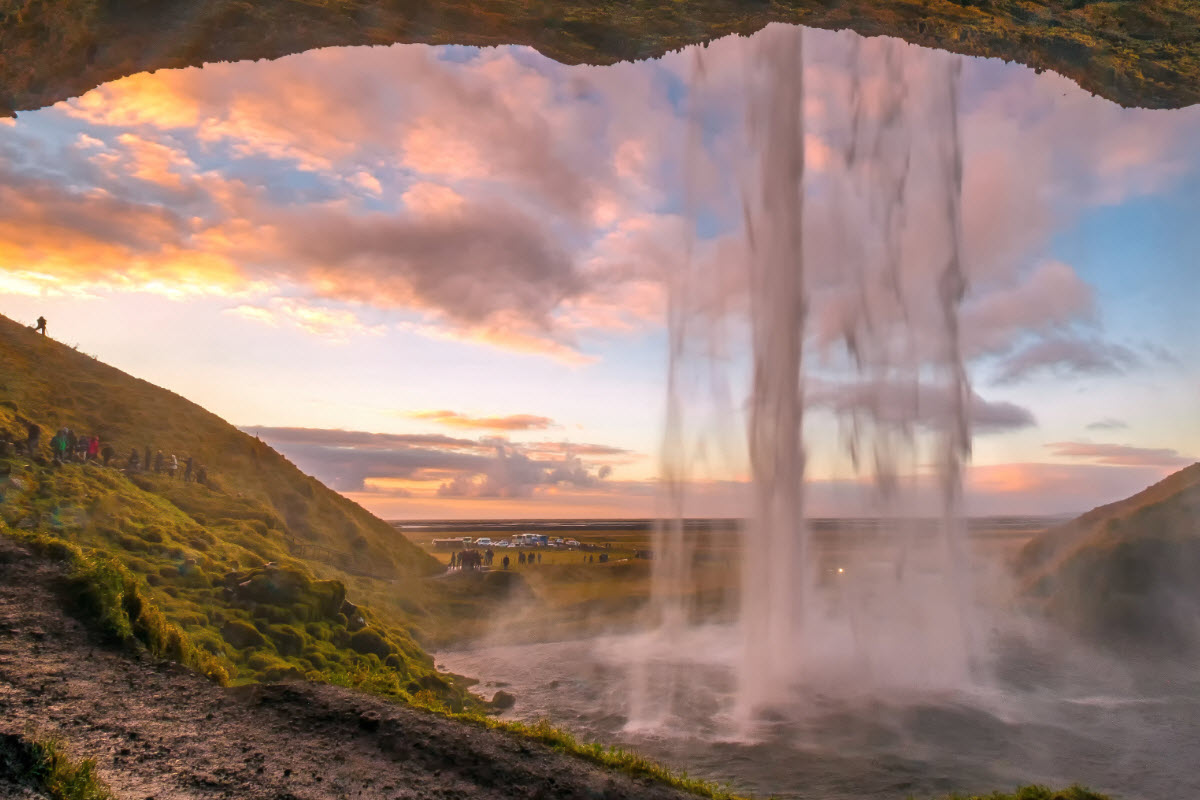
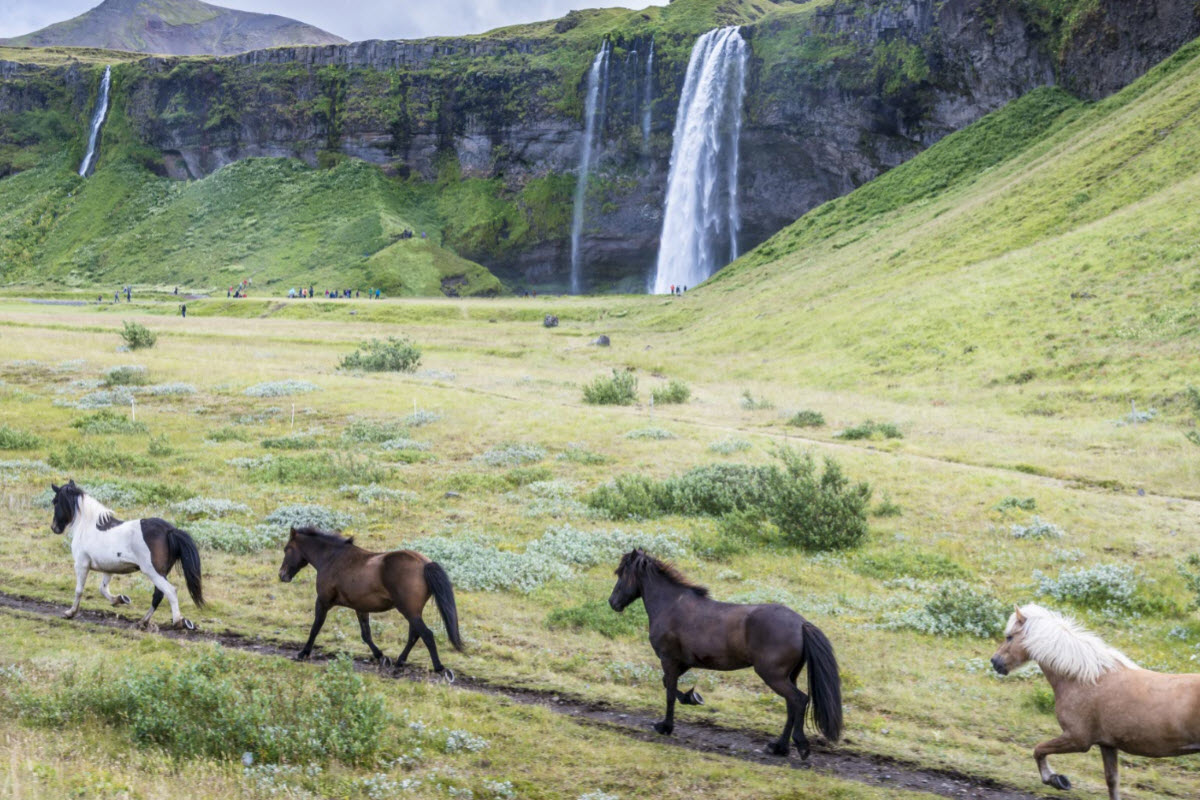
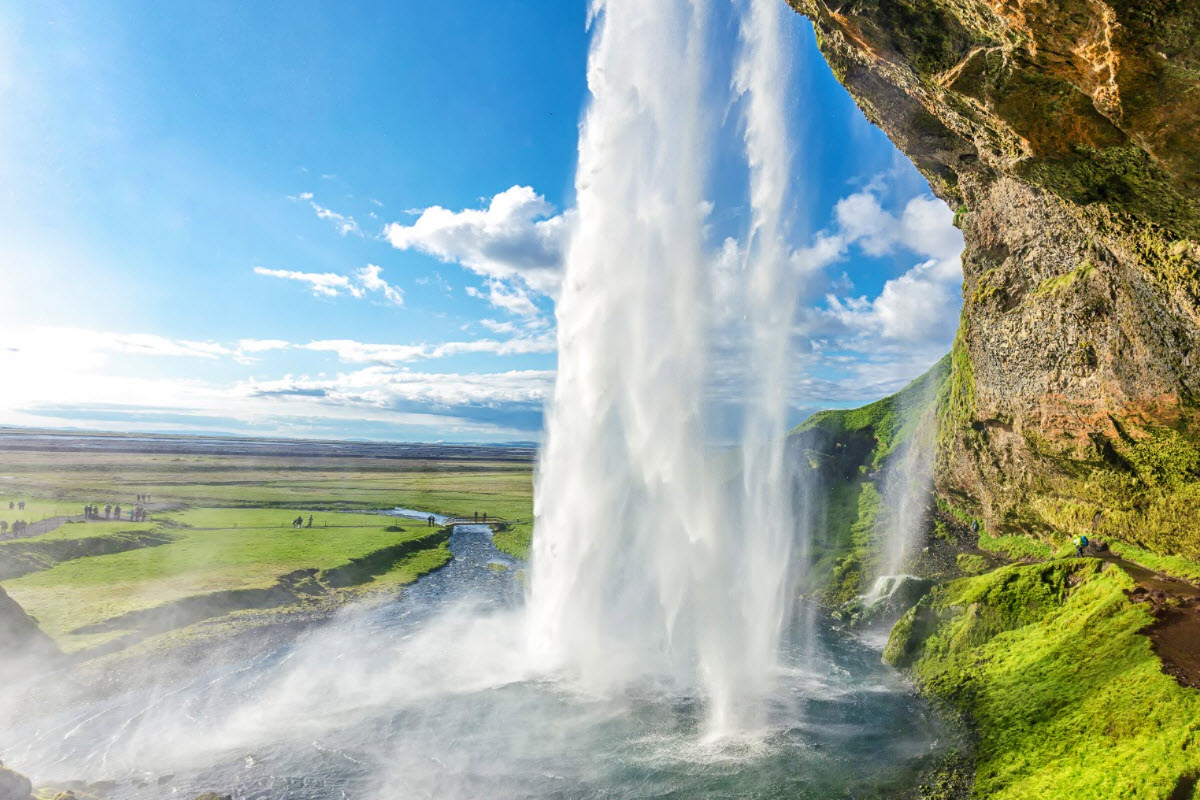
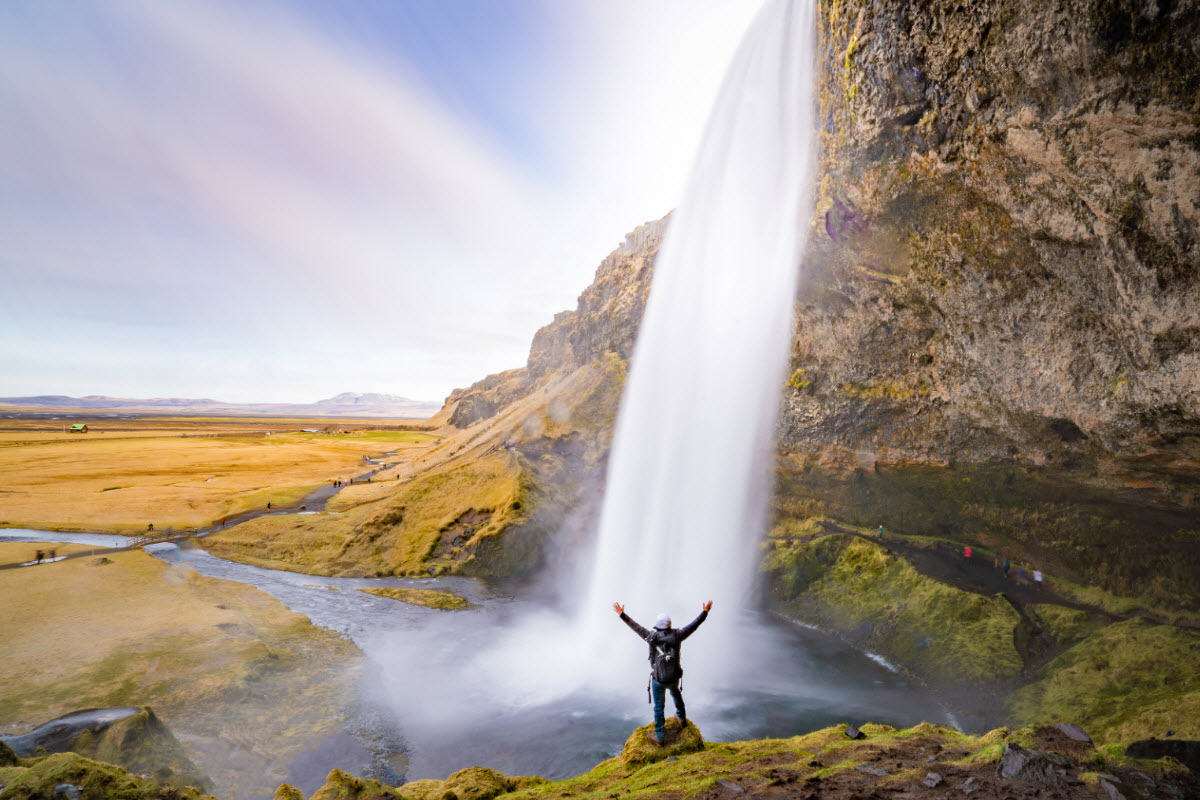






It is possible to walk behind Seljalandsfoss Waterfall
Seljalandsfoss Waterfall in South Iceland looks beautiful during the winter
Sunset by Seljalandsfoss Waterfall in South Iceland
Icelandic horses running close by Seljalandsfoss Waterfall in Iceland
Seljalandsfoss Waterfall in the summer time in Iceland
Seljalandsfoss Waterfall is a beautiful waterfall located in South Iceland
Quick info
Seljalandsfoss N63° 36.956' W19° 59.545'
Height: About 62 meters
Length of route: About 700 meters.
If the circular route is taken, about 1.5 km.
Difficulty: Easy
Average stay time: About 30 minutes to one hour
Facilities: Toilets, Camping area next to the waterfall at Hamragarðar
Terrain: Vegetation, footpaths
